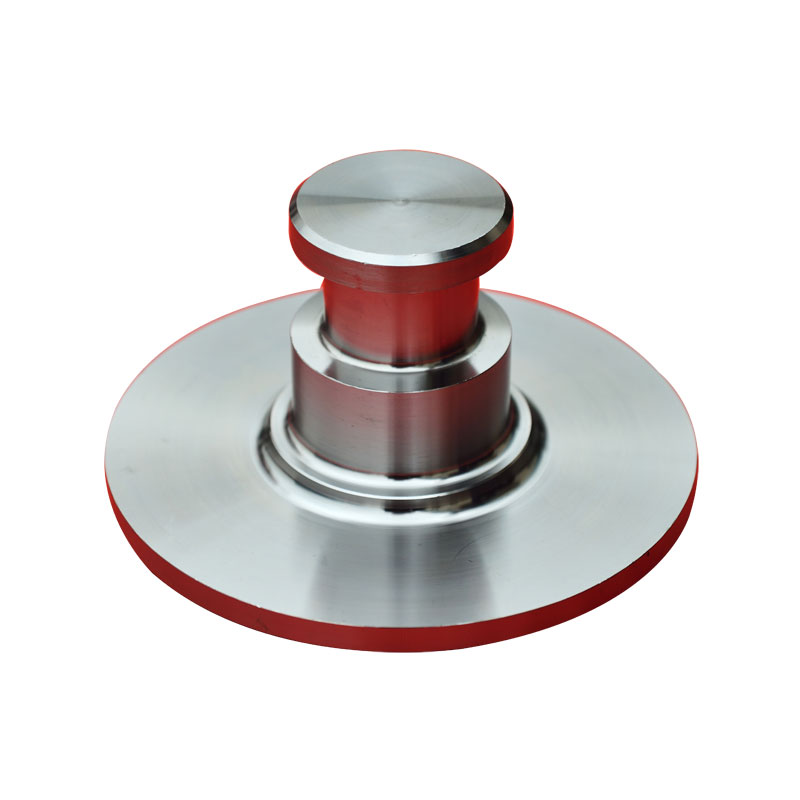Chemical cleaning methods for forgings
2022-07-19
Forgings after heat treatment, its surface more or less will have different degrees of oxidation phenomenon, serious will produce more oxide skin on the surface of forgings. At present, there are two main surface cleaning methods for removing oxide scale: chemical cleaning and mechanical cleaning.
Chemical cleaning this type of method is the chemical removal of the forgings surface of the oxide and adhere to the insoluble salts. Commonly used methods are: sulfuric acid pickling method, hydrochloric acid pickling method, electrolytic cleaning method. Among them, the most used is sulfuric acid pickling method and hydrochloric acid pickling method.
Sulfuric acid pickling method uses sulfuric acid aqueous solution, its mass concentration is 50~200g/L, pickling temperature is usually in the range of 60~80℃. Sulfuric acid is oxidizing acid, its pickling speed is lower than hydrochloric acid, sometimes to speed up pickling speed, can be matched with ultrasonic as an auxiliary means.
Hydrochloric acid pickling method uses hydrochloric acid aqueous solution, its mass concentration is 50~200g/L, pickling temperature is usually below 40℃. Hydrochloric acid is a reducing acid, which has strong pickling ability and may cause over corrosion of the metal matrix under oxidized skin. Therefore, forgings pickling often add part of the inhibitor (such as urea or utopin) to protect the metal matrix. The price of hydrochloric acid is higher, and the forgings are easy to rust after pickling, so less is used in production.
Whether using sulfuric acid pickling or hydrochloric acid pickling method, operation, forgings after pickling, also need to be put into the hot water of 40~50℃ for washing, and then put into the mass fraction of 8%~10% sodium carbonate aqueous solution for neutralization, finally with hot water rinse.
Chemical cleaning equipment mainly refers to pickling tank. In order to avoid being eroded by acid washing liquid, acid pickling tank is usually made of acid resistant concrete, stainless steel, PVC plastic and glass fiber reinforced plastic and other acid resistant materials. In addition, in order to improve working conditions and improve productivity, some pickling tanks are also equipped with a variety of lifting and continuous conveying devices.

Chemical cleaning this type of method is the chemical removal of the forgings surface of the oxide and adhere to the insoluble salts. Commonly used methods are: sulfuric acid pickling method, hydrochloric acid pickling method, electrolytic cleaning method. Among them, the most used is sulfuric acid pickling method and hydrochloric acid pickling method.
Sulfuric acid pickling method uses sulfuric acid aqueous solution, its mass concentration is 50~200g/L, pickling temperature is usually in the range of 60~80℃. Sulfuric acid is oxidizing acid, its pickling speed is lower than hydrochloric acid, sometimes to speed up pickling speed, can be matched with ultrasonic as an auxiliary means.
Hydrochloric acid pickling method uses hydrochloric acid aqueous solution, its mass concentration is 50~200g/L, pickling temperature is usually below 40℃. Hydrochloric acid is a reducing acid, which has strong pickling ability and may cause over corrosion of the metal matrix under oxidized skin. Therefore, forgings pickling often add part of the inhibitor (such as urea or utopin) to protect the metal matrix. The price of hydrochloric acid is higher, and the forgings are easy to rust after pickling, so less is used in production.
Whether using sulfuric acid pickling or hydrochloric acid pickling method, operation, forgings after pickling, also need to be put into the hot water of 40~50℃ for washing, and then put into the mass fraction of 8%~10% sodium carbonate aqueous solution for neutralization, finally with hot water rinse.
Chemical cleaning equipment mainly refers to pickling tank. In order to avoid being eroded by acid washing liquid, acid pickling tank is usually made of acid resistant concrete, stainless steel, PVC plastic and glass fiber reinforced plastic and other acid resistant materials. In addition, in order to improve working conditions and improve productivity, some pickling tanks are also equipped with a variety of lifting and continuous conveying devices.

X
We use cookies to offer you a better browsing experience, analyze site traffic and personalize content. By using this site, you agree to our use of cookies.
Privacy Policy



